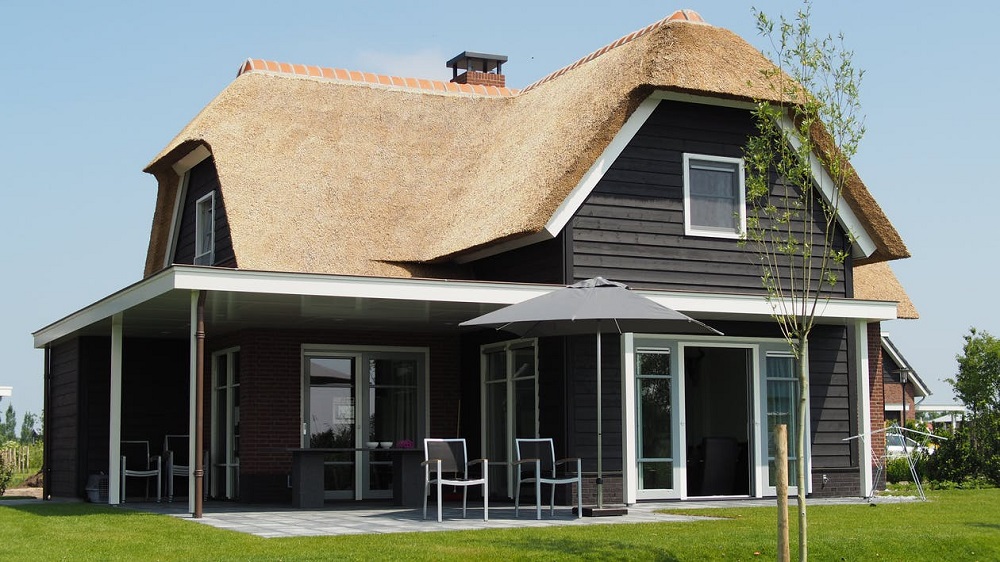A roof system would be incomplete without roof drains, which are an essential but often-overlooked component.
When your roof’s drains are working, it’s easy to take them for granted. It’s usually when roof drains aren’t working properly due to a lack of regular maintenance that disaster strikes. Maintaining your drainage system to prevent damage to your roof is a must. How do you go about doing this? What are you waiting for?
Types of Roof Drainage
Overwhelmingly, commercial structures have flat or low-sloped roofs. Gravity drains and siphonic drains are the two most common types of flat roof drains. Gutter and scupper systems can be installed on commercial roofs as well.
Gravity Drainage
Since water gravitates toward the lowest point, gravity drains rely on this natural tendency. Four sloping sections on a roof with a gravity-fed drain will usually lead to the same drain. A vertical drain pipe can only be reached by inclining pipes.
When it comes to commercial roofing, gravity drains are best suited for smaller structures because larger roofs collect water faster than they can be drained by this type of system.
Siphonic Drainage
A siphonic drainage system is common on large commercial roofs. Each drain point has a baffle that prevents air from entering the pipes, which have a lower atmospheric pressure than their surroundings. Because of this area of low pressure, water flowing down the drain is sucked in even faster than the force of gravity itself. Siphonic drains are capable of draining at a rate nearly 100 times faster than a gravity drain.
A vertical drain pipe empties into the ground in siphonic systems, where pipes run vertically until they connect. This frees up more space on the roof for HVAC systems and other equipment.
While siphonic drainage is suitable for podium drainage under the right circumstances, gravity drainage is a better option in most cases.
Gutters
The majority of the time, gutters are used in conjunction with other drainage systems on residential, rather than commercial, pitched roofs. Flowing water is directed to a downspout and then to the ground by gutters that run along the building’s perimeter.
Scuppers
Scuppers are openings in the roof’s outer walls that are built into the structure. In the event of heavy rain, they are typically only required because they direct water away from the building’s exterior.
Consequences of Blocked Roof Drains
To prevent clogs and backups, both gravity and siphonic drain systems have measures in place. A strainer prevents large pieces of material from entering the pipe in a gravity system.
The baffle in a siphonic system serves the same purpose as a strainer. If these devices aren’t inspected and cleaned on a regular basis, they can both suffer from blockages.
When it comes to commercial roofing, roof drain cleaning should be an essential part of routine maintenance. When a storm dumps leaves and other debris on your roof, the drain or baffle can become clogged.
Water pooling can occur if your roof’s drains are blocked. Your roof’s ponding can cause fungus, plant growth, and the decomposition of your roofing materials, as well as the accumulation of water on your roof. Birds and other wildlife may be drawn to standing water on your roof.
This can lead to disastrous water overflows, in which water is pushed into areas where it should not be. Regardless of whether you do it yourself or hire a professional, proper roof maintenance always requires a thorough drain cleaning.
Inspecting the Drainage System on a Flat Roof
Your building’s roof and drainage system should be familiar to you regardless of whether or not you’ve hired a professional to inspect it. It is recommended that you have your roof inspected and cleaned once a year at the earliest opportunity.
Consider more frequent inspections if your building has already experienced roof or drainage issues. Your roof should be inspected and cleaned at the end of fall and the beginning of summer.
Your roof can be cleaned to its maximum extent at the end of autumn, when all the leaves have fallen. It is possible to remove spring storm debris from your roof at the beginning of summer, when the volatile spring weather has passed.
You or the commercial roofer you hire should perform the following tasks during your inspection:
- All foreign objects and debris must be removed from the roof, as well as from around the drains and the baffles. There should be no hiding places for the strainer or baffles.
- The next step is to look for any standing or stagnant water. This may not just be a drainage problem, but a problem with the roof’s materials.
- After that, run a drainage speed test to make sure there aren’t any clogs and that everything is draining properly. It is important to inspect your roof for any problems, such as blocked gutters or clogged downspouts.
Make sure that any trees near your roof are trimmed so that their leaves don’t fall directly onto your roof, where they can build up and become a safety hazard. If you do this before your roof inspection, you’ll ensure that any debris from tree trimming is removed from the roof during the cleaning process.

